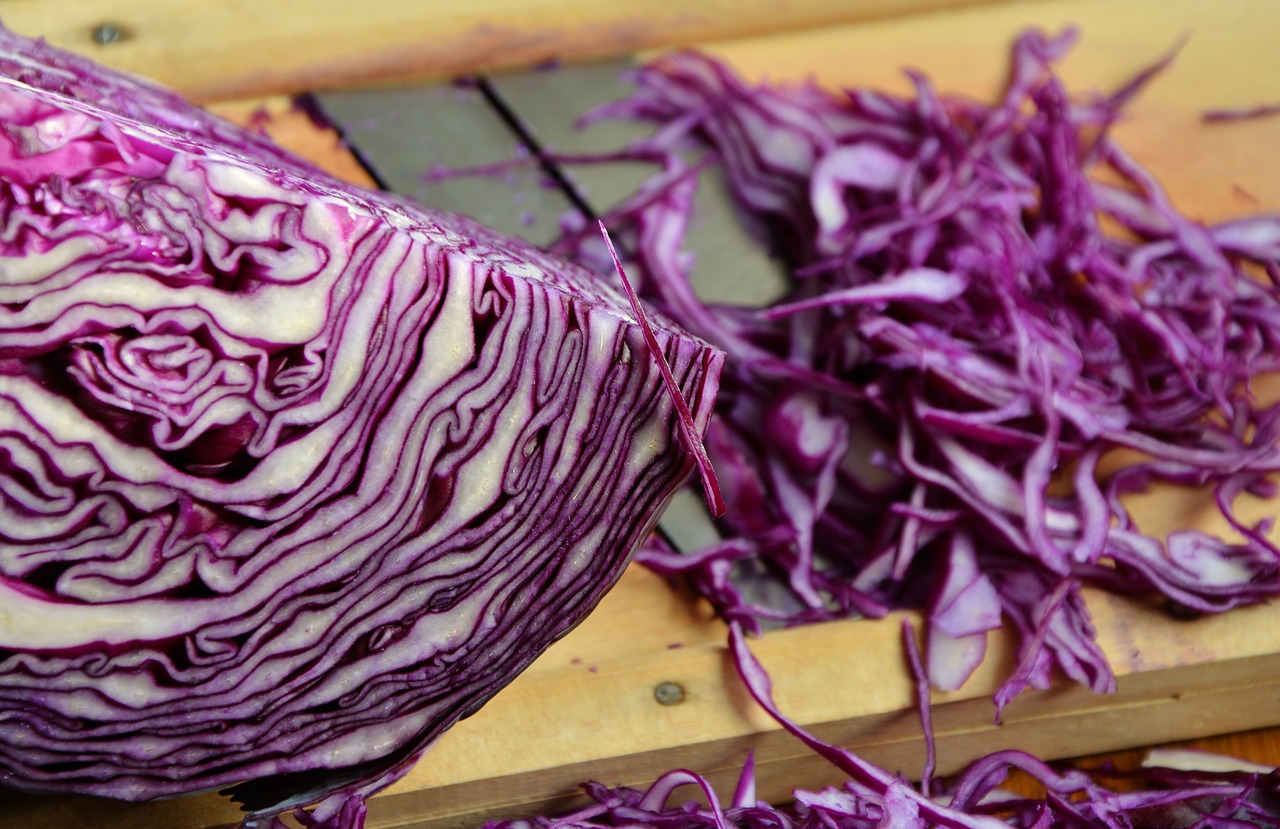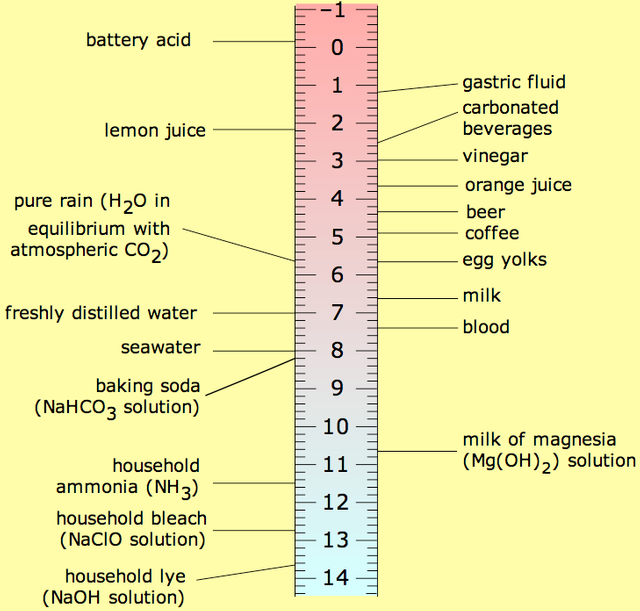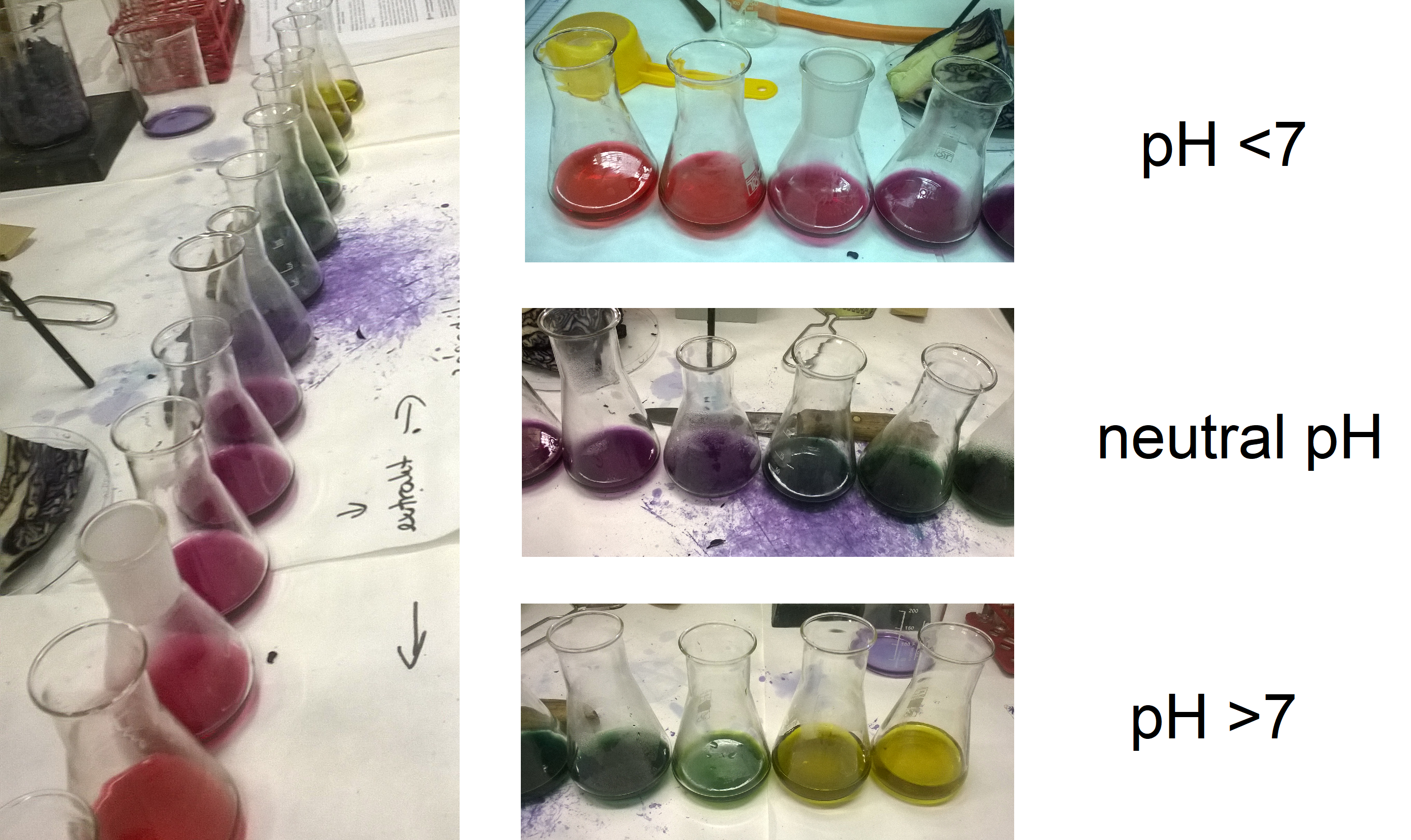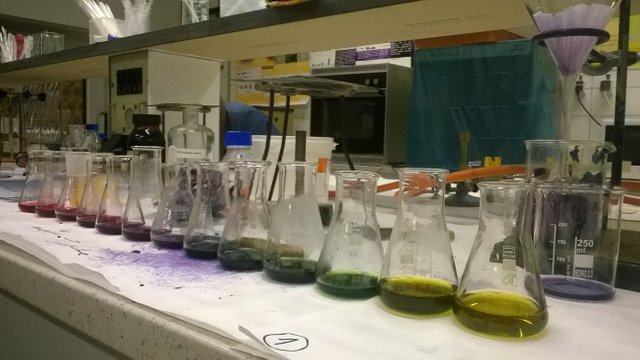How to make cabbage pH indicator

Hi guys, today I would like to present you with basic experiment that you can also recreate at home by yourselves!
Well, you surely heard about pH. What is it? It is basically a numerical scale that measures the acidity or alkalinity of something. To be more precise it is the negative of the base 10 logarithm of the molar concentration, measured in units of moles per liter, of hydrogen ions. Water has pH 7 – so that is something we call neutral pH. Solutions with pH <7 are termed acidic, whereas those with pH >7 basic. And as you probably figured out acids taste sour, whereas bases taste bitter. The more to the extremes (closer to 0 or 14) the more potent the acid or base is. These potent solutions can be dangerous and burn your skin, therefore it is very important to handle them with caution and care. On the scheme bellow you can see pH values of some common substances (just to get better idea).

Source
How does red cabbage come into play?
Well, red cabbage is greater than just tasty ingredient of various salads. Red cabbage can help you with great questions, such as what is the pH of this or that. How, you ask? It is due to special pigments called anthocyanins - water-soluble vacuolar pigments. Depending on the pH they change colour - to red or even green. That is also the reason why the colour of red cabbage is dependent on the pH of the soil it grows in. The red cabbage extract thus turns red/magenta in acids, stays purple at neutral pH and turns blue/green/yellow in bases. Look at picture bellow (photos from my own experiment! :) ). We used various concentrations of HCl (acid) and KOH (base) to create this colourful gradient.

How can you do this at home?
Take red cabbage (just few leaves) and chop it to tiny pieces. Put these pieces into a container of sorts and add about 1l of boiling water. Wait for about ten minutes – the water should turn purple.
Filter this cabbage mixture, so you have no chunks of leaves there. Just pure cabbage juice.
Divide the cabbage to different containers (jars, glasses) and try to keep the volume for each container the same.
Now the fun part! Try pouring different things (vinegar, water, oil, washing soda, laundry detergent, etc.) to the jars with cabbage juice and see what happens. This way you can find out more about the pH of these substances. Please, if you happen to get this great idea of using dangerous substances do think about your safety!

Hopefully you all did learn something new today and will try this kitchen science by yourself. It is really simple, so go on and do it!
Have a great day!
References:
https://en.wikipedia.org/wiki/PH
https://en.wikipedia.org/wiki/Red_cabbage
haha this was random and pretty fun
Thank you for posting @jepper.
Lovely illustrations and photographs.....appreciate seeing this genre at Steemit......you may be able to tag it....steemiteducation.
Cheers.
Thank you @bleujay, I am glad you liked it.
And thank you for the tag recommendation as well, will do that! :)